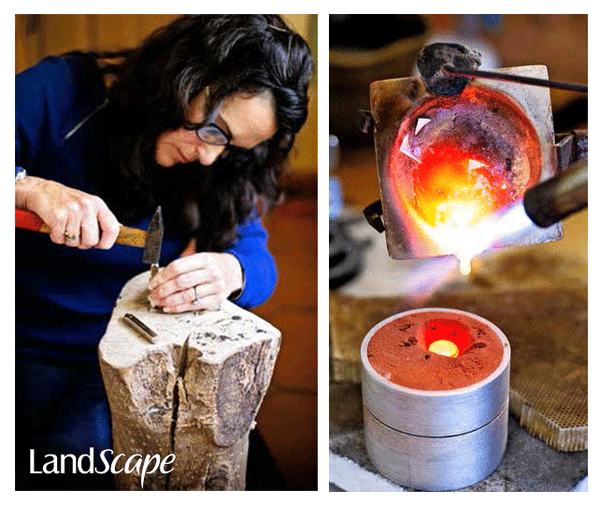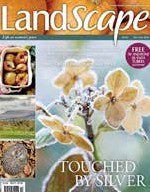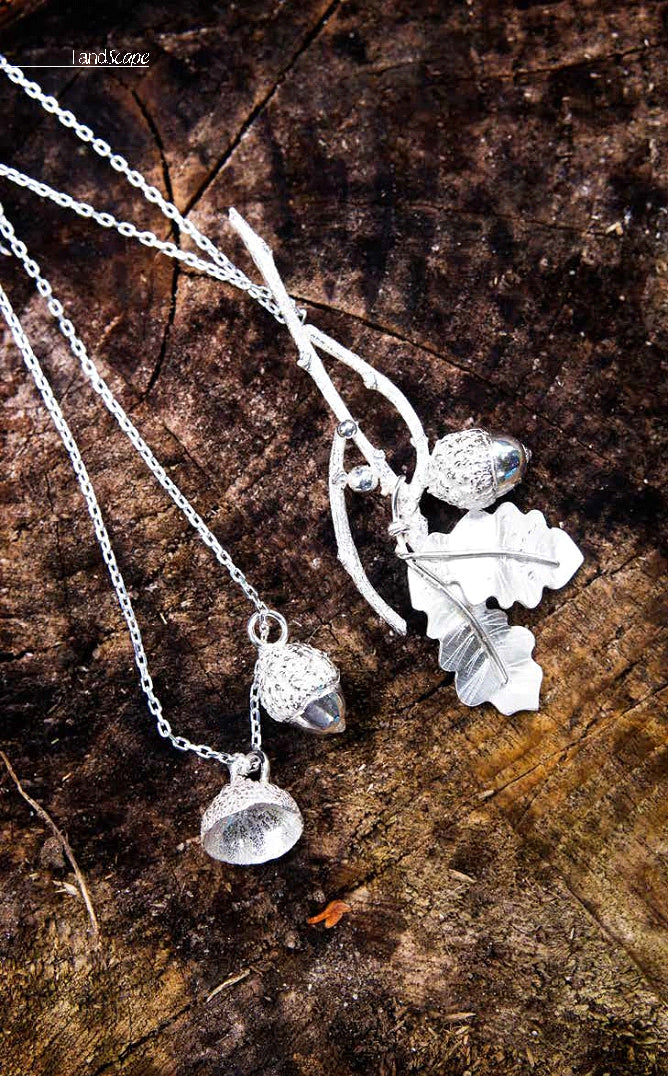IN A QUIET corner of a family home on the edge of the Surrey Hills, a replica of an acorn is being shaped in silver. The perfectly proportioned nut, still in its cup, was a chance find during a stroll on nearby Headley Heath. Now it is being recreated, a long-lasting reminder of its autumnal perfection.
Working on the acorn is jeweller Caroline Brook. Accompanied only by the background murmur of the radio, she makes gold and silver pieces inspired by nature. “I love the work,” she says. “I like the idea of the permanence of what I make, and the fact people nearly always buy it for a reason, usually as a gift.”
Perfecting Skills
Working space
Today, 20 years on from her first course, she works from home in her peaceful studio space. Here, she has a traditional jeweller’s bench. Taller than a work bench, it allows the craftsperson to sit tall, without hunching over the work surface. It has a curved indentation on which sit clamped tools and a jeweller’s peg. This is a wedge of wood on which the jeweller places the metal being worked on.
Beneath, there is a drawer designed to catch any pieces of scrap metal or gold dust. This can then be melted down and re-used. There are boxes of tools with wooden handles and a series of blow torches. A section of beech tree trunk was found on a walk on the heath. “A beech tree had been cut down and pieces were left,” says Caroline. “It is perfect for hammering and punching metal, as it absorbs the shock.”
Capturing beauty
She makes a range of jewellery including rings, bracelets, pendants and cufflinks. Almost all her pieces have their roots in nature and the gentle Surrey countryside surrounding her home. “I have always been attracted to nature. I walk every day with my dog and watch the seasons come and go,” she says. “I search for objects and pick things up that appeal to
me like tiny acorns, twigs and branches or pretty stones. I really enjoy the search for that special piece.
“I picked this acorn up because the detail was incredible. It was a lovely size and very delicate. I liked the volume of the cup, its texture and the way it’s quite a deep cup with a little acorn in the middle,” she explains.
To turn the acorn into a silver pendant, Caroline has to make a clay mould. This allows her to create a cast of the nut that accurately reproduces all its detail. “I have the skills to make my own version, but what appeals to me is the idea of preserving a piece of nature forever. I want to capture its beauty in precious metal,” she says. Casting highlights the intricacy of the natural detail on objects. “You don’t realise the lovely texture on an acorn cup until you see it cast.”

Pouring silver
The next stage is to prepare the silver. For this piece, she uses sterling silver, an alloy containing 92.5 per cent silver by weight and 7.5 per cent other metals, usually copper. She prefers to work with fine silver, which is almost 99 per cent pure. “It is very malleable with a nice white colour. But it is softer, so not as good for this type of piece,” she says.
The metal is heated using a blow torch, and becomes liquid after approximately five minutes. Caroline then quickly pours the metal into the mould. This is very tricky. The silver hardens the moment the heat is removed. If the pouring is not timed correctly, the mould can be ruined. If that happens, the process has to start again. The metal can be melted down and re-used, but the burnt areas of clay have to be thrown away and a new mould created.
The silver acorn is removed from its clay casing and the finishing process started. First, Caroline removes the sprue, the stem created by the remaining metal in the pouring channel. A piercing saw with a very fine blade is used to do this. The rough edge left by the cut is then smoothed with a fine file, without removing any of the surface detail.
Finishing off
To make the silver acorn into a pendant, Caroline attaches a jump ring, the little silver loop through which the chain is threaded. This is made from silver wire and is neatly soldered to the base of the acorn. The soldering can be a fiddly procedure, but one that she enjoys. “I have endless patience, and love working with small things,” she says.
She cuts small pieces of solder to fasten the jump ring on the acorn. These are applied to both the base of the cup and the jump ring, and then the area is heated.
For this fine work, she uses a traditional jeweller’s mouth. This involves blowing through a rubber tube, controlling the flame with her breath. The solder has a lower melting point than the silver, so the flame melts it but leaves the precious metal untouched. The melted solder acts as glue, joining the jump ring to the acorn.
The soldering work leaves a dark discolouration created by oxidisation. An acid compound called pickle is used to remove this. The silver is added to a mix of pickle and water in an old slow cooker. It is then gently heated for approximately four minutes. When the silver is taken out, all the black oxide has disappeared.



